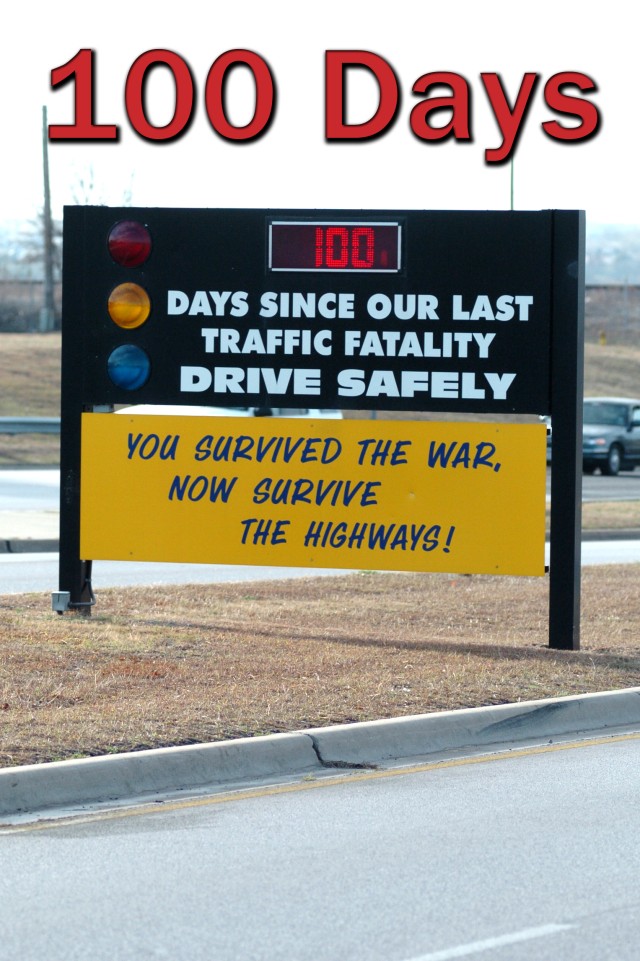Fort Hood Soldiers and civilians have survived the highways for 100 days and earned a training holiday.
In last week's Fort Hood Sentinel, III Corps and Fort Hood Commander Lt. Gen. Rick Lynch announced Soldiers would receive a training holiday if they reached 100 days without a traffic fatality. The holiday was the result of a Soldier's suggestion to Lynch and is now scheduled for April 27.
The digital signs positioned at the installations main access control points showed that magic number Wednesday.
Installed during the Spring of 2002 in an effort to heighten awareness following fatal privately owned vehicle accidents involving Fort Hood Soldiers and Department of the Army civilians working at or assigned to the Great Place, the signs display the number of days since the latest traffic fatality.
The last accident-free period of at least 100 days occurred Aug. 6-Nov. 21, 2006, when no Soldier was involved in a fatal accident for 107 days. III Corps Safety Officer Mel Kelder said.
The most recent time Fort Hood came close to 100 days without a traffic fatality was 98 days from Oct. 5, 2007, to Jan. 12, 2008.
Since the signs were emplaced, the record number of fatality-free days was 252, from June 6, 2003 to Feb. 13, 2004.
The last Fort Hood traffic fatality occurred Nov. 10 and involved a Soldier who lost control of his motorcycle on Highway 195, safety officials said.
Safety officials credit Soldiers' involvement with their personal safety as well as command's emphasis on vehicle safety.
FORT HOOD, Texas (Feb. 19, 2009) -- "It's engaged leadership and individuals taking responsibility and using self-discipline," Kelder said. "Soldiers are taking a more mature attitude in regard to their own safety."
A heightened emphasis on motorcycle safety and the mandatory sequential course structure has reduced motorcycle accidents, which took the lives of eight Fort Hood Soldiers during Fiscal Year 2008.
Fifteen Fort Hood Soldiers were killed in privately owned vehicle accidents during that same time.
"Soldiers understand their responsibilities as motorcycle riders," Kelder said.
Trends show traffic fatalities commonly increase following redeployments, as Soldiers adjust to being home from extended combat tours. This does not seem to be the case as 3rd Armored Cavalry Regiment Soldiers recently returned from 15 months in Iraq and the 4th Infantry Division continues its homecoming.
Kelder credits a more intense job in reintegration procedures with the upturn of safety among Soldiers returning from theater.
"I think we're doing a better job with putting emphasis on reintegrating Soldiers back home before leaving theater," Kelder said.


Social Sharing